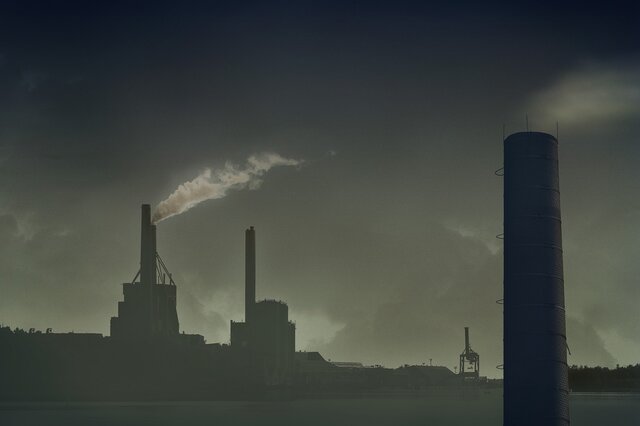New Delhi — Acrid clouds engulfed India’s capital on Wednesday as air pollution fuelled by fireworks and farm stubble burning was ranked “hazardous” by monitors for the first time this winter.
New Delhi is home to more than 30 million people and is regularly ranked as one of the most polluted urban areas on the planet.
Commuters walking to work cough through poisonous smog that kills thousands each year, according to health experts, although few in the sprawling city wear masks.
The city’s famous India Gate monument was wreathed in foul-smelling mist on Wednesday.
“These days if you want to go out, you can’t think of leaving without a mask,” teacher Mamta Chauhan, 27, told AFP.
“There is a constant bad smell and the pollution level is very high.”
In India, New Delhi is currently experiencing severe #airpollution, with the air quality index exceeding 500, officially making it the most polluted city in the world.
The Central Pollution Control Board has classified the air quality as “very poor to severe.”ℹ️ CPCB pic.twitter.com/C6eenbpvF1
— #LetMeBreathe ™ 😷 (@LetMeBreathe_In) October 23, 2024
New Delhi is blanketed in acrid smog each year, primarily blamed on stubble burning by farmers in neighbouring regions to clear their fields for ploughing.
Levels of fine particulate matter – cancer-causing microparticles known as PM2.5 pollutants that enter the bloodstream through the lungs – surged to nearly 23 times the World Health Organization recommended daily maximum.
The pollutants topped 344 micrograms per cubic metre, according to monitoring firm IQAir on Wednesday, which listed air in the sprawling megacity as “hazardous”, ranking it as the world’s worst.
Air pollution is expected to worsen during the Hindu festival of lights, Diwali, which falls on November 1 this year when smoky fireworks spewing hazardous toxins are part of celebrations.
‘Going to get worse’
“It’s going to get worse,” bank manager Raveena Chawra, 24, told AFP.
“I hope people set off less firecrackers, especially for the sake of the children and the elderly. The smoke from the firecrackers will blanket the whole city in smog.”
New Delhi this month ordered a “complete ban” on all firecrackers – both their manufacture and sale – in view of the “public interest to curb high air pollution”.
Previous restrictions were routinely ignored.
Police are often reluctant to act against violators, given the strong religious sentiments attached to the crackers by Hindu devotees.
Authorities have also banned stubble burning, and police in Haryana state this week arrested several farmers for setting fires before tilling.
Delhi woke up to a thick layer of smog this morning. Air Quality remains in ‘very poor’ category; AQI recorded 367 at noon.#Delhi | #AQI | #Pollution | #Smog | #delhiaqi pic.twitter.com/dAImAmKlCF
— All India Radio News (@airnewsalerts) October 23, 2024
The New Delhi government in past years has sought to cut pollution by restricting vehicle traffic, including a scheme that only allowed cars with odd or even number licence plates to travel on alternate days.
Authorities have also imposed seasonal bans on construction work and on diesel-powered vehicles from entering the city.
But government efforts have so far failed to solve the country’s air quality problem.
A study in the Lancet medical journal attributed 1.67 million premature deaths in 2019 to air pollution in the world’s most populous country.
Follow African Insider on Facebook, Twitter and Instagram
Source: AFP
Picture: Pixabay
For more African news, visit Africaninsider.com


